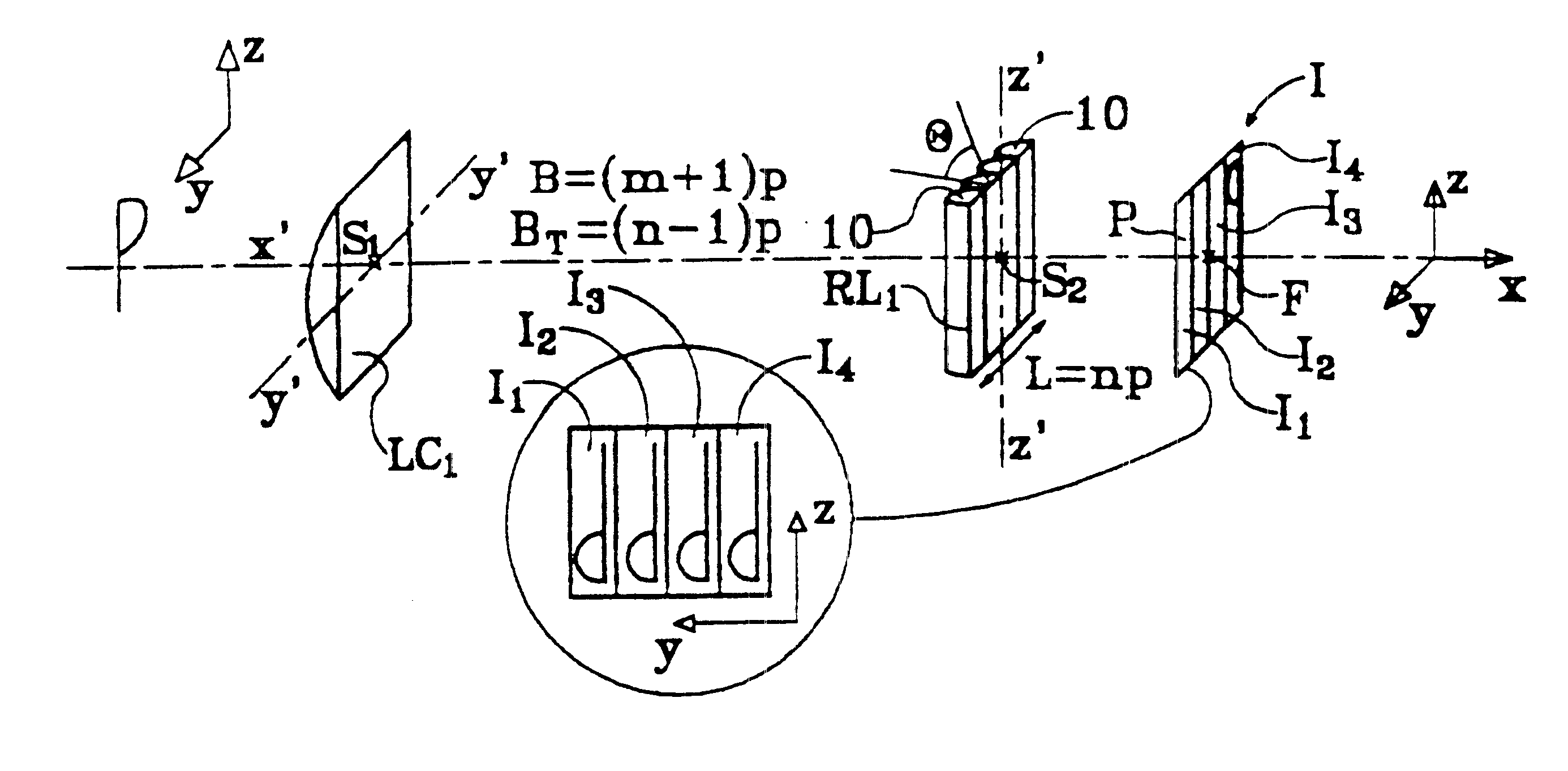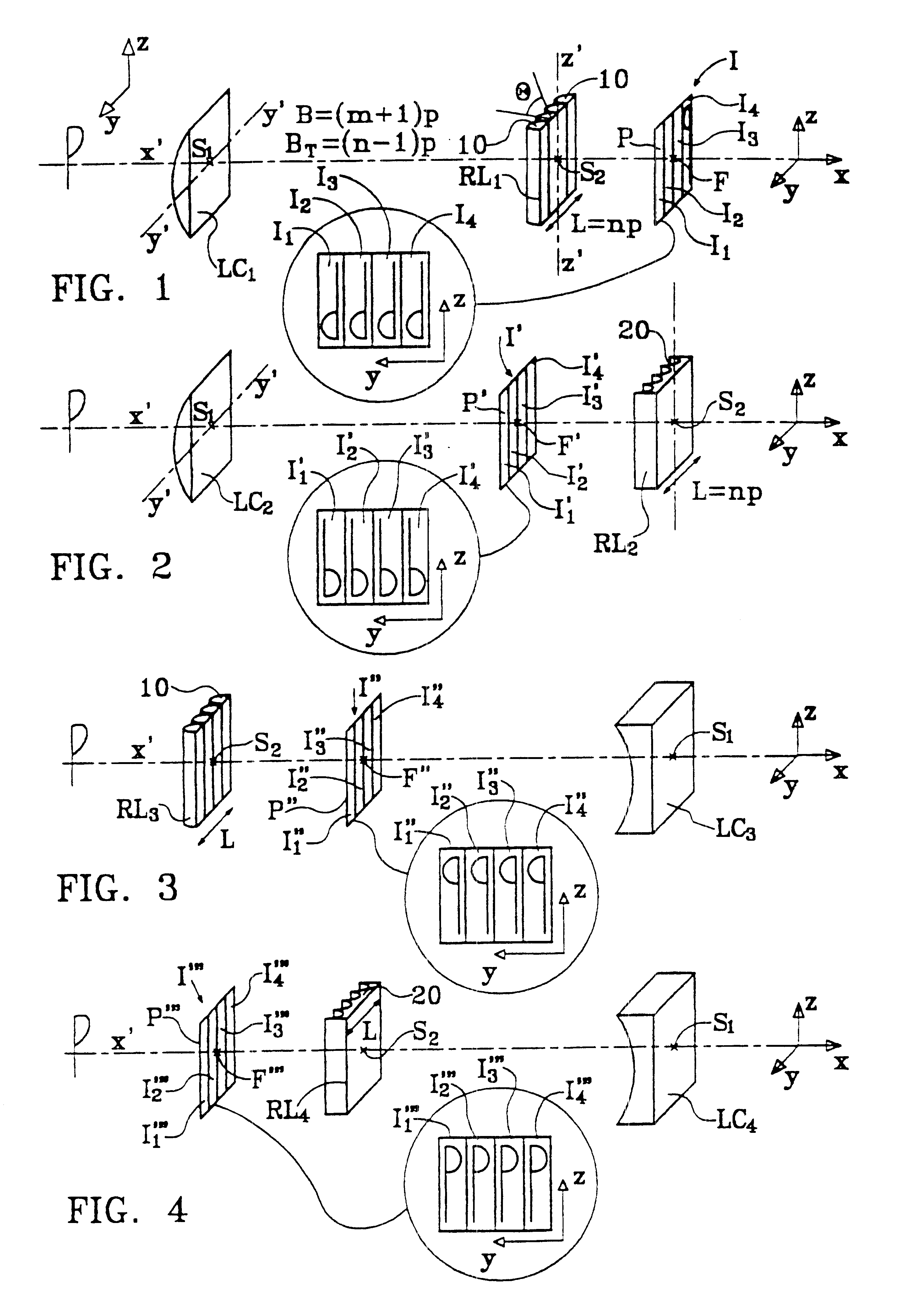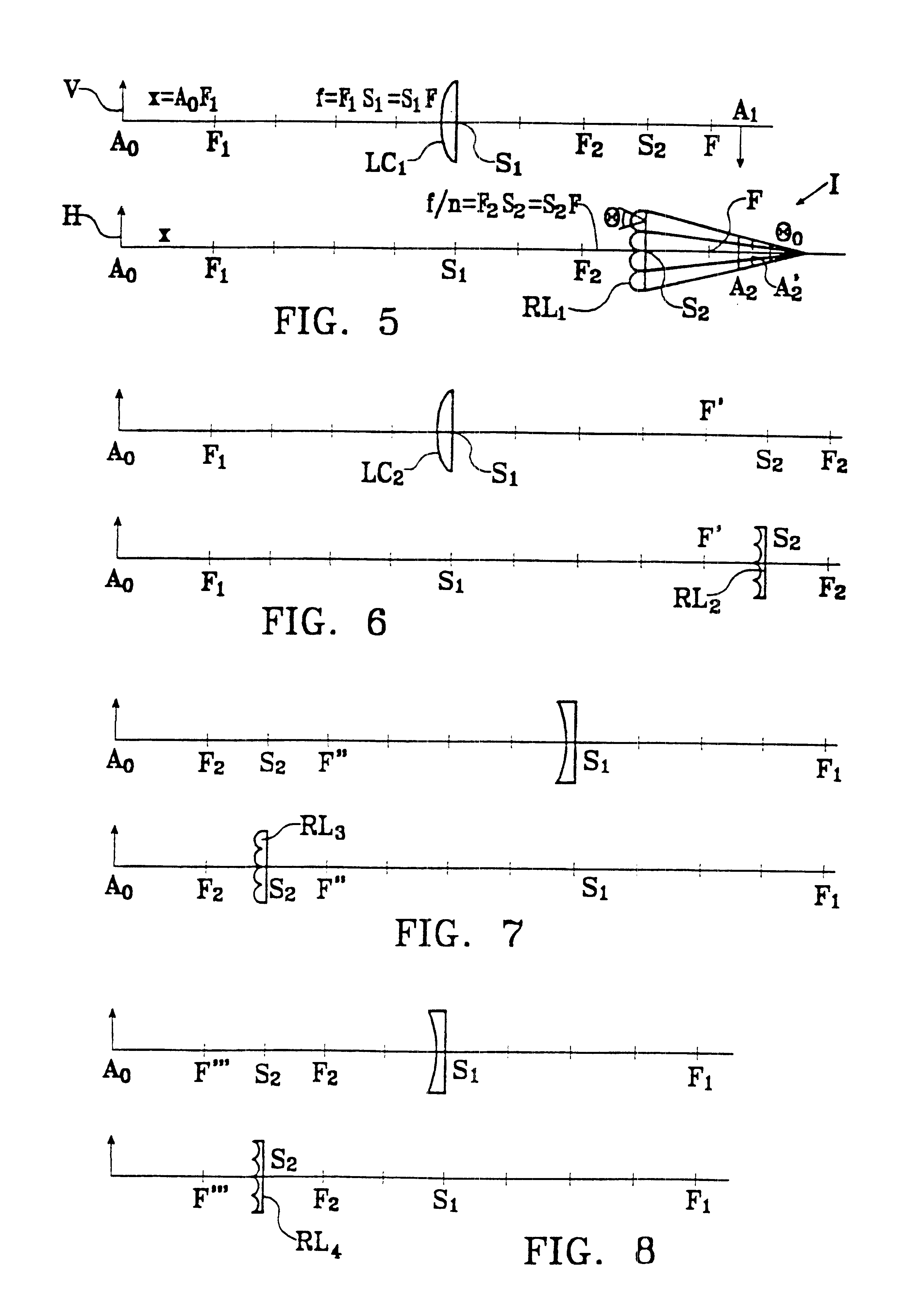Autostereoscopic imaging device and system comprising it
a technology of autostereoscopic imaging and imaging system, which is applied in the field of autostereoscopic imaging device and, can solve the problems of requiring precise positioning, reducing the dimensions of the lens array, and implementing much more complicated or even impossible problems
- Summary
- Abstract
- Description
- Claims
- Application Information
AI Technical Summary
Benefits of technology
Problems solved by technology
Method used
Image
Examples
second embodiment
the invention as shown in FIG. 2 implements a converging cylindrical lens LC.sub.2 of horizontal axis perpendicular to the axis x'x, and a diverging lens array RL.sub.2 having n contiguous vertical-axis concave cylindrical lenticles 20. The lens LC.sub.2 and the array RL.sub.2 have a common focal plane P' which is situated between the cylindrical lens LC.sub.2 and the lens array RL.sub.2. The plane P' intersects the optical axis x'x at the focus F' and the elementary flat images of anamorphic format I'.sub.1, I'.sub.3, I'.sub.3 and I'.sub.4 are images in which the horizontal component is virtual and the real component is real.
To obtain an anamorphosis ratio that is substantially equal to n between the horizontal and vertical components of the elementary images, the ratio between the focal lengths of the cylindrical lens LC.sub.2 and of the elementary lenticles of the lens array RL.sub.2 is selected as in the preceding case to be substantially equal to -n, i.e. S.sub.1 F'=-nS.sub.2 F...
example i
The following values are selected: ##EQU6##
When the anamorphosis ratio C is exactly compensated for an object situated at 3 meters (m) from the cylindrical lens LC.sub.1, the ratio C is equal to 3.465 for an object situated at infinity, using above formula (4), i.e. .DELTA.C / C=13.3% and k=0.866.
For an object situated at 2 m, then C=4.55, i.e. .DELTA.C / C=13.8%.
For an anamorphosis coefficient that is exactly compensated at 3 m (C=4), the coefficient .DELTA.C / C lies in the range .+-.13% approx. from 2 m to infinity, which is entirely compatible with good quality picture-taking. Such deformation is progressive and it difficult for the observer to perceive. It can be compensated as a function of focusing distance, as indicated below.
It should be observed that when performing projection or back-projection, the projection coefficient k can be involved and it is thus the product of the coefficients k used when taking the picture and / or when projecting (or back-projecting it) that needs to b...
example ii
Converging Cylindrical Lens & Converging Lens Array (FIGS. 1 and 5), with f.sub.1 =0.1 m.
To obtain an anamorphosis coefficient C=4 with focusing at 4 m, calculation shows that the lenses of the converging lens array must have a focal length f.sub.2 =0.2598 m, i.e. n*=.vertline.f.sub.1 / f.sub.2.vertline.=3.85, i.e. k=n* / N=0.96.
PUM
 Login to View More
Login to View More Abstract
Description
Claims
Application Information
 Login to View More
Login to View More - R&D
- Intellectual Property
- Life Sciences
- Materials
- Tech Scout
- Unparalleled Data Quality
- Higher Quality Content
- 60% Fewer Hallucinations
Browse by: Latest US Patents, China's latest patents, Technical Efficacy Thesaurus, Application Domain, Technology Topic, Popular Technical Reports.
© 2025 PatSnap. All rights reserved.Legal|Privacy policy|Modern Slavery Act Transparency Statement|Sitemap|About US| Contact US: help@patsnap.com



